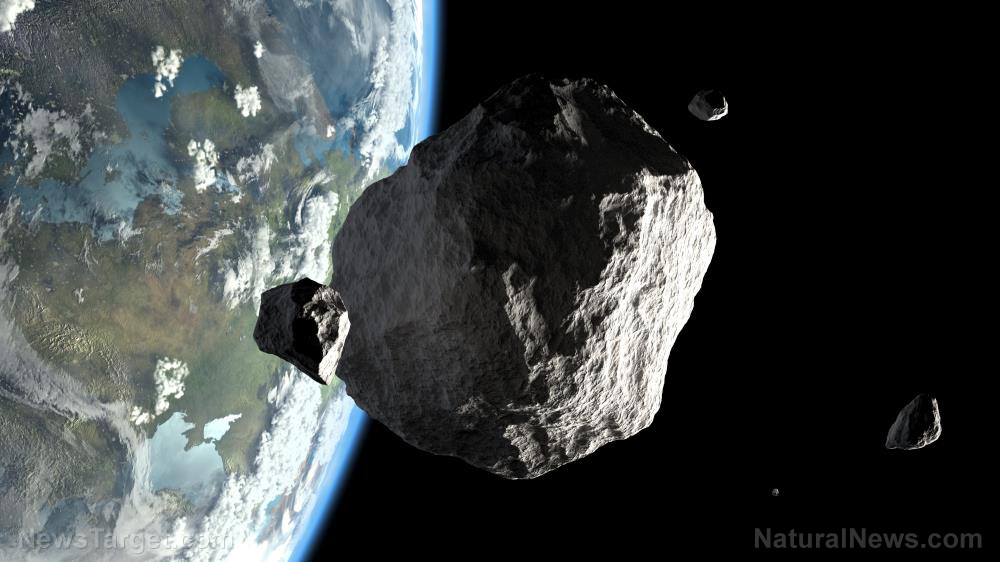Solar telescope offers unprecedented glimpse into the Sun
09/08/2020 / By Virgilio Marin

Scientists can take a better look at the Sun after a European team of researchers upgraded a solar telescope called GREGOR, located at the Teide Observatory in the Canary Islands.
Recent observations using the telescope offer a spectacular, unprecedented glimpse into the Sun’s surface. An image captured magnetic structures, which resembled the craggy, golden texture of popcorn. Another image zooms in on a sunspot, a dark region on the Sun’s surface that’s relatively cool and extremely magnetic.
The images were captured after major upgrades were done on Europe’s largest solar telescope.
“This was a very exciting, but also extremely challenging project,” said Lucia Kleint, a scientist at the Leibniz Institute for Solar Physics in Germany and the lead researcher of the project.
“In only one year we completely redesigned the optics, mechanics and electronics to achieve the best possible image quality,” Kleint added. Kleint and her colleagues published a paper detailing their work in the journal Astronomy & Astrophysics.
In July this year, the National Aeronautics and Space Administration (NASA) and the European Space Agency (ESA) released recent images of the Sun captured from the Solar Orbiter spacecraft.
Upgrades allow better look at the Sun
Work on GREGOR started in 2018; the upgrades include improved optics and control systems, reduced vibration and a repainted observatory to reflect less light and interfere less with observations. The team also implemented management and scheduling changes to improve output.
“The project was rather risky because such telescope upgrades usually take years, but the great teamwork and meticulous planning have led to this success,” said Svetlana Berdyugina, director of the Leibniz Institute and one of the contributors to the upgrades.
With the upgrade, scientists can now capture features of the Sun that are only 30 miles across. This is equivalent to seeing a needle on a soccer field from a distance of one kilometer, according to the researchers.
The improvements will boost future research, especially as solar activity is on an upswing. Previous observations suggest that the Sun, which goes through an 11-year solar cycle, is past the solar minimum, the period in the cycle in which sunspots and other solar phenomena are fewest.
Why study the Sun?
It’s important to study sunspots and other related phenomena because they affect space weather and the satellites roving Earth’s upper atmosphere.
Sunspots are regions of great magnetic activity; magnetic fields twist, tangle and eventually snap. This unleashes a sudden explosion of energy called solar flares. Solar flares are sometimes accompanied by coronal mass ejections, or CMEs. These are enormous bubbles of radiation and solar particles, which explode into space at extreme speeds when magnetic field lines abruptly reorganize.
Waves of energy and particles from solar flares and CMEs can reach areas near Earth and trigger intense celestial lights called auroras. But stronger bursts can further cause magnetic storms that disrupt communication satellites and electric grids. People on Earth can potentially experience electricity shortages and power outages.
In 1989, for example, excess solar energy triggered a power surge that damaged transformers used in the Hydro-Quebec power system. Six million people in the northeastern U.S. and Canada had no electricity for more than nine hours. At the time, the Sun was at the solar maximum, the period in which solar activity is at its peak. (Related: Radiation from deep space is intensifying, affecting space weather and potential space travel.)
The 1989 widespread power outage serves as a great example of how faraway solar processes could have a significant impact to life on Earth. Studying solar phenomena and the Sun’s features such as its magnetic field could help people prepare for potential catastrophes. GREGOR and other solar telescopes can help advance research on the Sun.
Space.news has more on scientific observations on the Sun.
Sources include:
Tagged Under: coronal mass ejection (CME), cosmic, GREGOR, Power Outage, radiation, solar activity, solar flares, Space, space research, sunspots, the sun
RECENT NEWS & ARTICLES
COPYRIGHT © 2017 SPACE.COM
All content posted on this site is protected under Free Speech. Space.com is not responsible for content written by contributing authors. The information on this site is provided for educational and entertainment purposes only. It is not intended as a substitute for professional advice of any kind. Space.com assumes no responsibility for the use or misuse of this material. All trademarks, registered trademarks and service marks mentioned on this site are the property of their respective owners.
















